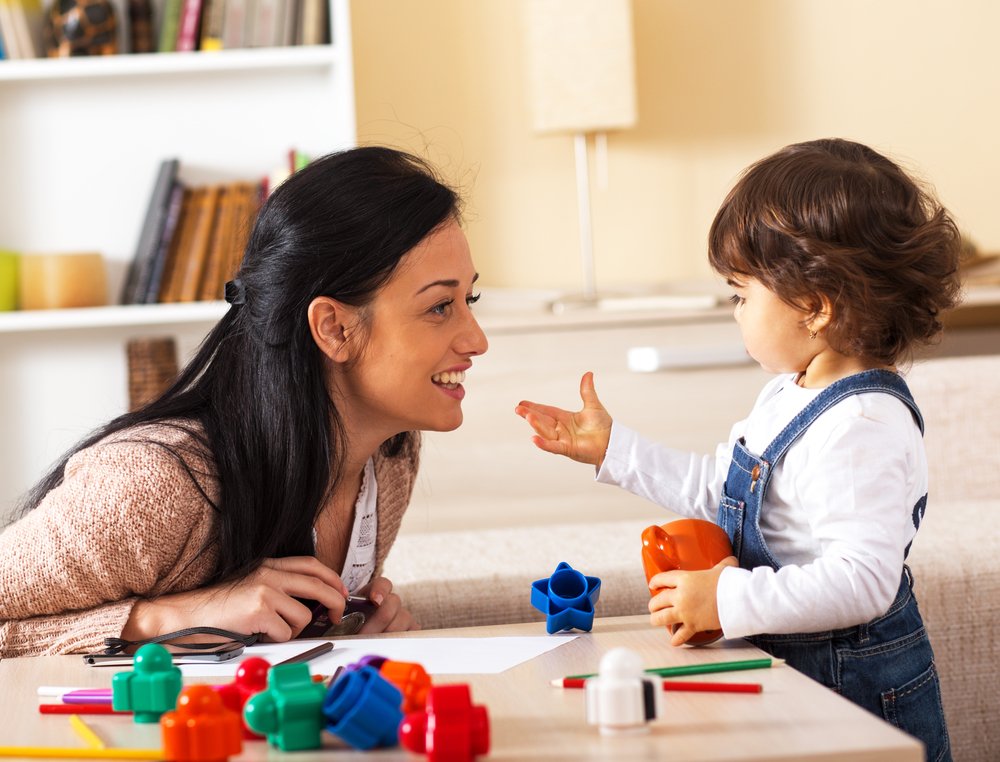Key points:
1. Environment and attentional abilities impact language development.
2. Attentional abilities progress from face-to-face to including objects, aiding language acquisition.
3. Quality of input, considering complexity and interaction, is crucial for language growth.
4. High-quality interactions and good attentional abilities enhance language skills in babies.
Ask any psychologist what is one of the very first things they learn at school and, undoubtedly, the answer will always be genes vs. environment. We already know that environment and context play a huge role in our children’s development, so today we’ll explore just how big of a role it plays in language acquisition.
By environment, in this article, we’ll include specifically attentional abilities, a.k.a the ability your baby has to hold their attention to certain stimuli, and the quality of the input they are receiving (complexity and variability of the interactions).
To understand how attentional abilities play a role, we must understand the evolution of parent-baby interactions during the first year of life. Up until your baby is 5 months old, interactions are considered as “dyadic”; meaning face-to-face, one-on-one (only 2 elements are participating). As your baby grows older, these interactions turn “triadic” including objects (cue in all the cute toys). What this means is that now these toys become an object of focus for verbal and attentional exchanges with your baby. This seemingly inconsequential transition is huge for language acquisition. It’s considered a turning point since your baby can start to relate words and sounds to specific objects and actions.
It doesn’t all come down to attentional abilities. It’s been thoroughly researched and proven that the amount of speech heard by babies strongly correlates with language outcomes. However, this is where quality input steps in. If it was all about hearing words, children would be placed in front of TVs all day and that would be the end of it. However, research dictates that quality is of the utmost importance. Quality includes both structural characteristics (complexity and variability) and interactions (the famous baby-talk and child-directed talk).
You may have guessed by now how these two elements (attention and quality input) merge to promote language development. In a longitudinal study published in Frontier of Psychology (Provenzi, Müller, Cassiano, 2018), it was found that babies with higher attentional abilities, had an easier time focusing on interactions with the caregiver and were therefore able to benefit more from these interactions, resulting in a higher linguistic development. However, for this to be true, the interactions had to be quality interactions. In cases where medium and high complexity and variability interactions were paired with high attentional abilities (measured at 6 and 9 months), the babies manifested better language production later on (measured at 18 and 24 months). When babies with high attention skills but less stimulating input were measured, they showed poorer language skills, even when compared with children with lower attentional abilities. So, if an ultimate winner had to be chosen, quality would trump attentional ability.
You can also find helpful information regarding baby talk and child-directed talk in our blog! Be sure to take a dive and find out how you can foster your child’s language acquisition.









7 Responses
Can you give an example of what they mean by less stimulating input vs high complexity interaction? My husband interacts with our baby a lot but it is mostly doing silly noises and faces. Is that considered less stimulating input? Or do they mean something entirely different.
Hi Raquel! Less stimulating input refers as activities like leaving your child watching tv or videos. What your husband does falls more on the high interactions side, but I’d suggest to add words to those silly moments, so he can make the most of them.
This is Awesome!
Thanks for your comment, we love that you are enjoying our Content!
Guideline to foster language acquisition with my baby